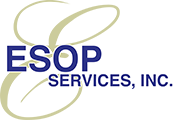...an ESOP is a win-win-win situation.
1. Consideration
Preliminary Analysis
Initial review of corporate objectives and data (no fee charged). Determine if S corporation status is a viable alternative.
Preliminary Stock Appraisal
Estimate the company’s fair-market value.
Financial Analysis
Estimate long-range effects of an ESOP on company operations under a variety of circumstances.
Repurchase Obligation Study
Conduct an analysis to establish the future payout requirements of the ESOP.
Design Study
Determine features of an ESOP that will positively affect employee motivation while implementing corporate objectives.
2. Installation
Plan Implementation
Execute all documents and file all required forms to secure an I.R.S. Favorable Determination Letter. Appoint trustee.
Financing
Secure appropriate financing for a leveraged transaction and recommend alternatives for structuring an ESOP loan.
Communications
Introduce the ESOP and related plans to employees with an audio-visual presentation, a “plain English” summary and a Q & A session that targets crucial employee concerns.
Independent Stock Appraisal
Arrange for the transaction appraisal, strictly interpreting the independence requirement.
Repurchase Obligation Funding
Explore funding alternatives for private companies to buy back ESOP stock upon distribution.
Administration
Initiate record keeping services with experience and expert third-party administrators. Provide a comprehensive manual for day-to-day administration.
Professional Liaison
Maintain liaison with attorneys, accountants, investment managers and trust officers and commercial lenders to assure a smooth and efficient installation.
ESOPs have become more popular in the past few years as a way to raise capital for new and ongoing concerns, according to Ron Gilbert.
3. Operation
Appraisal
Annual independent appraisal to determine current fair-market value.
Legal
Monitor tax law changes and regulatory developments and amend documents as needed.
Financial
Assist in capital formation and/or acquisition of other companies, including subsequent leveraged transactions.
Repurchase Obligation Study
Periodically review and update repurchase obligation projections.
Communications
Assist in ongoing communication, including communication updates and annual employee meetings.
Liaison
Maintain liaison and coordinate with other professional advisors.
Administration
Assist in day-to-day operation and interpretation of plan features.
4. Affiliated Services
Deferred Compensation
Assist in structuring non-qualified compensation programs to supplement or replace ESOP benefits for key employees.
Investment Management
Recommend investment advisors experienced in the “tax-free” rollover and other investment account areas for existing qualified plans.
Related Benefits
Assist companies in the design and implementation of other qualified plans, such as 401(k), and coordinate these related plans with the ESOP.
